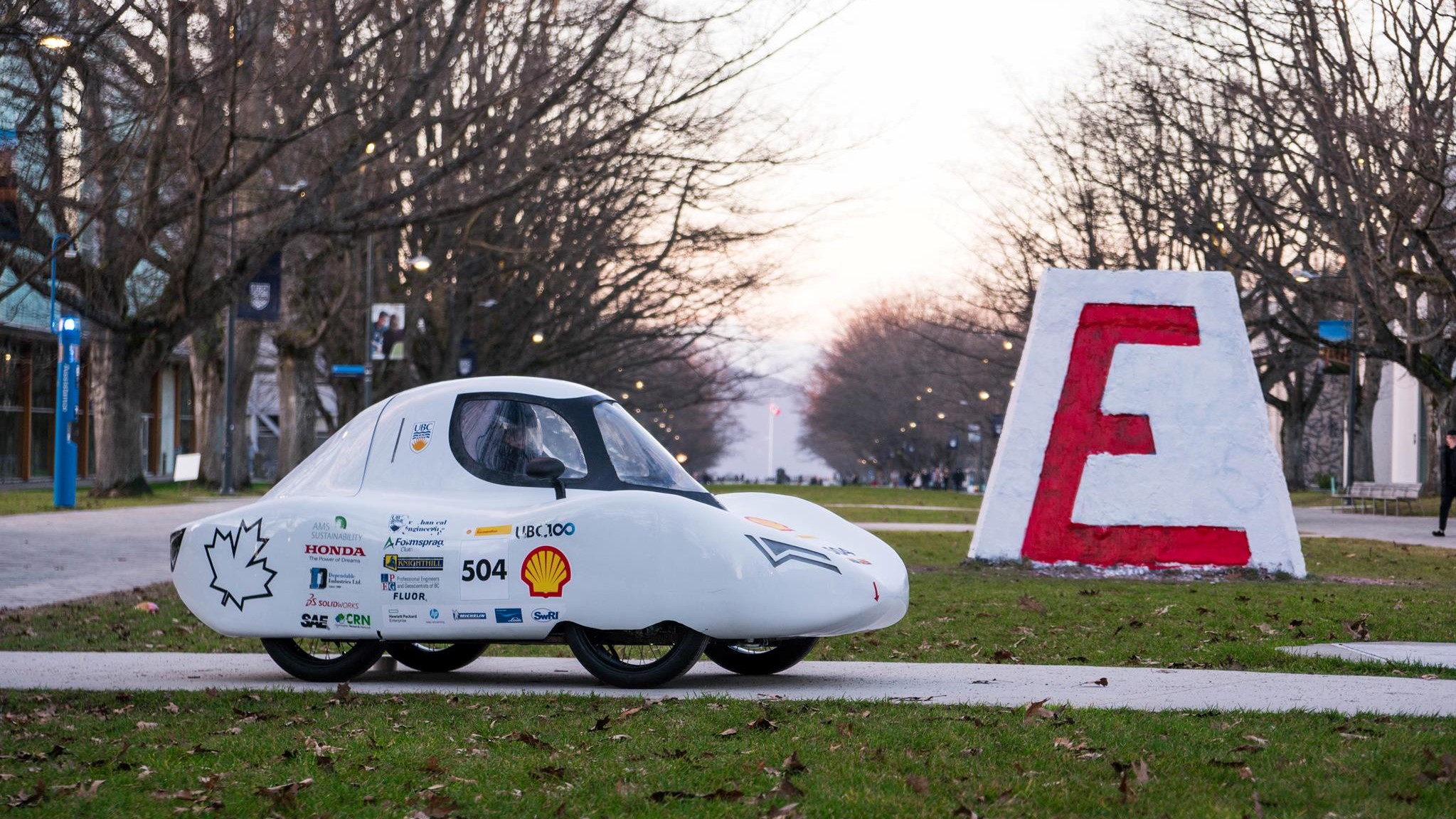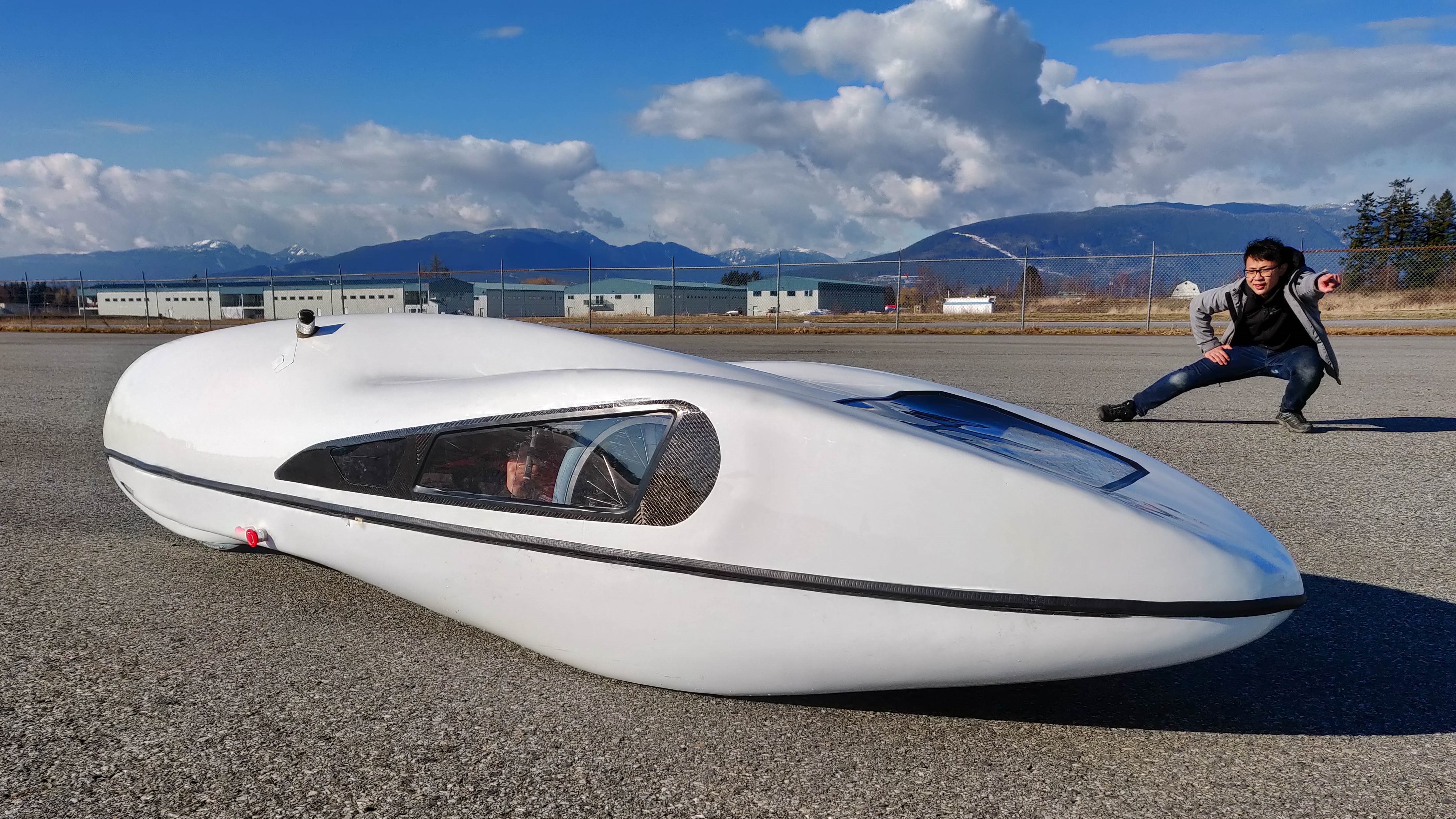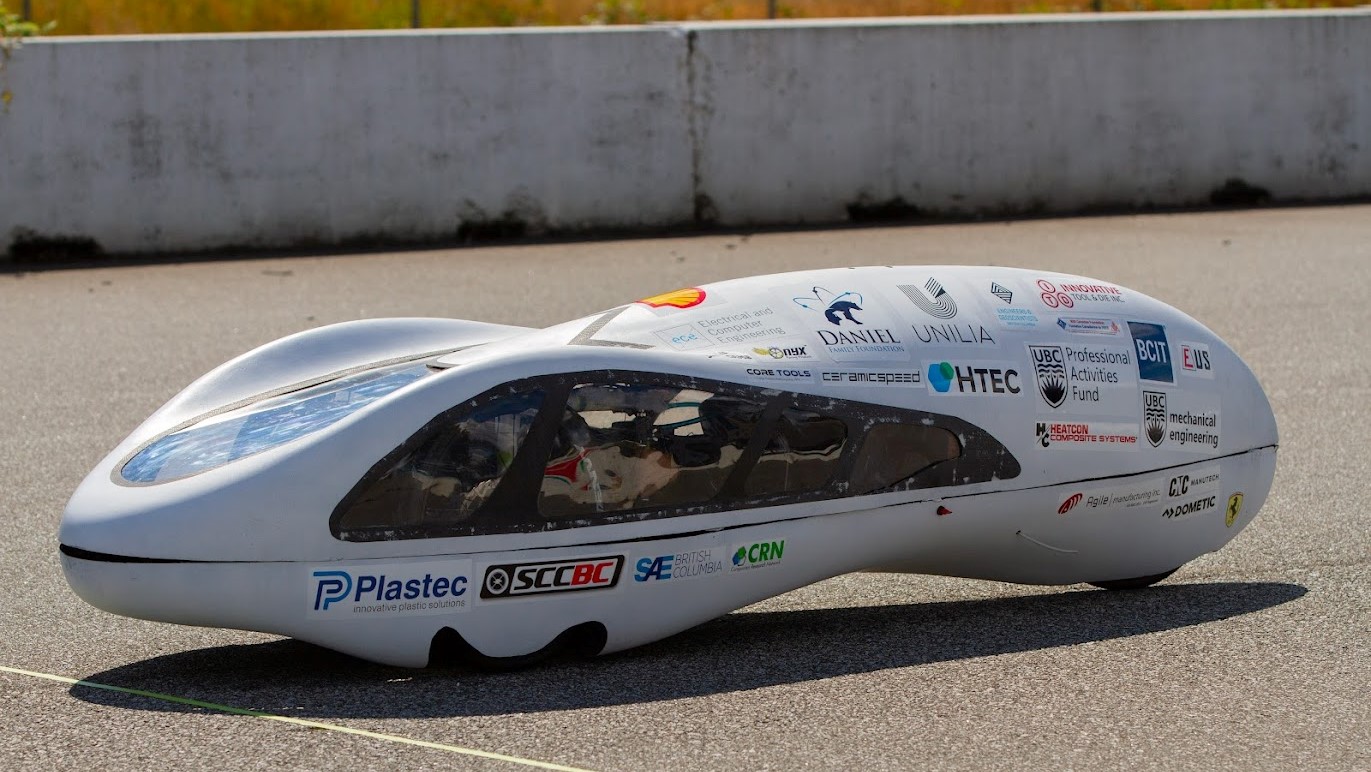The UBC Supermileage team is a group of 50 dedicated engineering students working to design and build fuel efficient gasoline powered vehicles for the Shell Eco-marathon Americas and the Society of Automotive Engineers (SAE) Supermileage Competitions. Our diverse team includes technical students from mechanical, eng-physics, integrated, computer, electrical, chemical, materials, manufacturing, geological, and environmental engineering as well as business, science, and more.
Fuelathon competitions provide engineering and technology students with a challenging design project that involves the development and construction of either a single-person, Prototype Concept or a larger four wheeled Urban Concept car. Students design and build 3 different cars, each with a different energy class: a conventional gas-powered, in the Prototype category, a hydrogen fuel cell-powered in the Prototype category and a battery electric-powered, in the Urban Concept category, ultra-efficient vehicles. As a team, we aim to set a world fuel economy record and increase public awareness for fuel economy, efficiency, and sustainability. Students become more sensitive to environmental issues as well as develop important project management skills.


